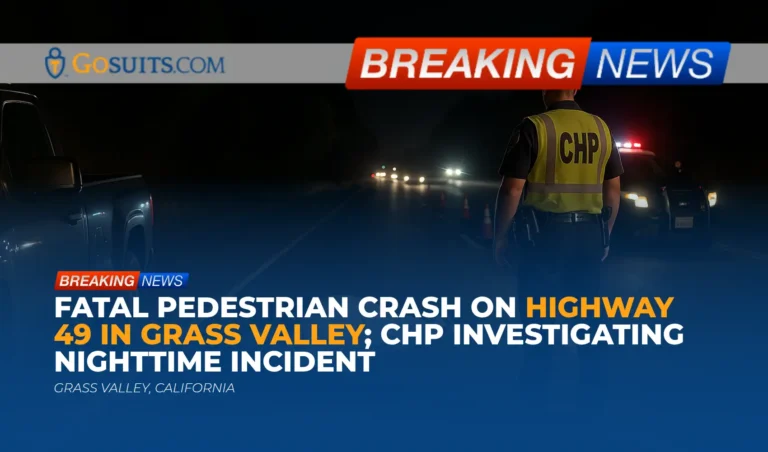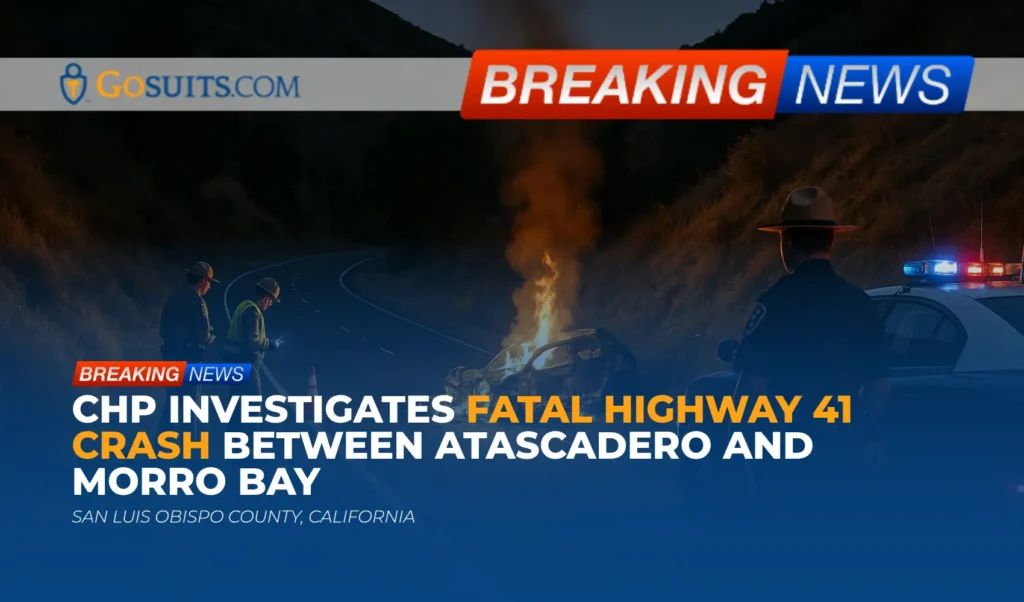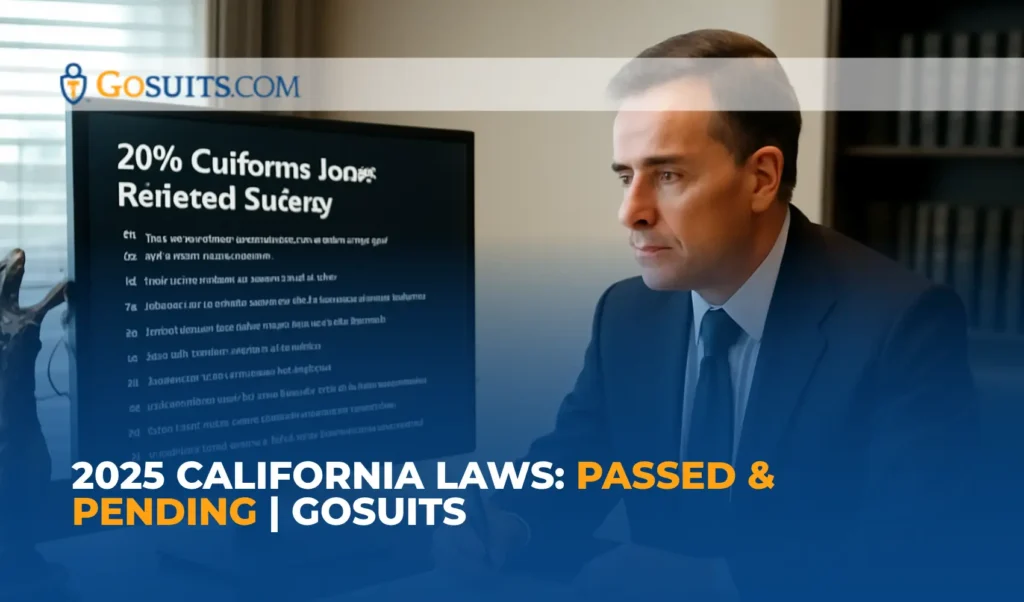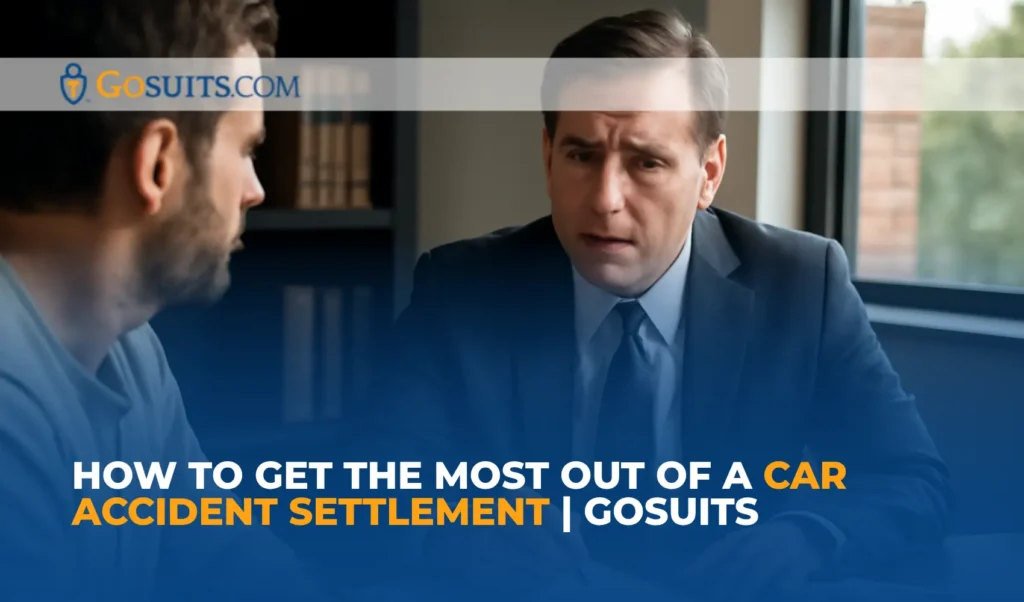- What We Know About the Highway 49 Pedestrian Fatality in Grass Valley
- Location, Timing, and Lighting Conditions Reported
- Statements From CHP and Status of the Investigation
- Why Nighttime Pedestrian Collisions Are So Deadly
- Potential Civil Liability and Rights After a Fatal Pedestrian Crash in California
- Immediate Steps Families Can Consider in the First 72 Hours
- How to Get Official Records: Police Report, Coroner and Autopsy Information, Death Certificates, and Public Records
- Preserving Physical, Digital, and Roadway Evidence
- Insurance and Claims Considerations, and Why to Consult Counsel First
- Key California Deadlines and Legal Frameworks That Often Apply
- Roadway Lighting, Design Issues, and State Highways
- Community and Public Resources That May Help
- Why Acting Promptly Matters After a Fatal Traffic Collision
- Commentary from Gosuits Grass Valley, California Personal Injury Attorney
What We Know About the Highway 49 Pedestrian Fatality in Grass Valley
A pedestrian was struck and killed by a pickup truck on Highway 49 near Bethel Church Way in Grass Valley on Tuesday night. According to initial statements, California Highway Patrol officers responded at approximately 9:30 p.m. The man who was hit died at the scene and had not yet been publicly identified at the time of reporting. Officials noted that the area of Highway 49 where the collision occurred is not well lit. It remains unclear why the pedestrian was in the roadway. The driver stayed on scene and cooperated with investigators, and authorities stated that impairment is not believed to be a factor. The affected stretch of the highway was temporarily closed and later reopened.
We extend our sincere condolences to those impacted by this loss. The information in this article is aimed at helping families understand the typical next steps after a fatal roadway incident, what records are available, and what rights may exist under California law.
Location, Timing, and Lighting Conditions Reported
The crash occurred along Highway 49 at Bethel Church Way in Grass Valley at night. Officials emphasized the lighting conditions in this area are limited. Darkness is a critical factor in pedestrian safety. National Highway Traffic Safety Administration materials explain that most pedestrian fatalities occur in dark conditions and often away from intersections, which can compound visibility challenges for drivers and pedestrians alike. See NHTSA pedestrian safety overview at nhtsa.gov for national data trends.
Roadway environment can influence risk. Reduced lighting, higher speeds on state routes, limited sidewalks or shoulders, and gaps between safe crossing points can elevate danger for people on foot. The Federal Highway Administration has published guidance on roadway lighting and pedestrian visibility countermeasures, available at safety.fhwa.dot.gov.
Statements From CHP and Status of the Investigation
Authorities indicated the driver remained at the scene and that DUI does not appear to be involved. CHP investigates fatal collisions to document roadway evidence, vehicle damage, statements from involved parties and witnesses, lighting and weather, and other contributing factors. Investigations can take weeks to months to complete, especially when collision reconstruction or advanced testing is involved.
Families typically can request the official CHP collision report once it is ready. More information on requesting a California Highway Patrol collision report is available at chp.ca.gov.
Why Nighttime Pedestrian Collisions Are So Deadly
National safety data consistently link nighttime conditions to a higher share of fatal pedestrian collisions. Although specifics for this incident remain under investigation, the general factors below help explain the elevated risk at night:
- Reduced visibility. Darkness lowers the distance and time drivers have to detect people walking. FHWA and related research describe how lighting countermeasures improve detection distances and driver response times. See FHWA guidance at safety.fhwa.dot.gov.
- Higher roadway speeds. State highways like Highway 49 often have higher speed limits than local streets. Higher speeds increase both stopping distance and injury severity in the event of a collision.
- Crossing not at intersections. NHTSA has reported that a substantial portion of fatal pedestrian collisions happen away from intersections, where crossing opportunities and lighting can be less frequent. See nhtsa.gov.
- Limited pedestrian facilities. Shoulders, sidewalks, and safe refuge areas may be limited along segments of state highways, raising risk when people are walking along or across the roadway.
These broader risk patterns are discussed here to provide context. They do not determine fault in this crash, which depends on the specific facts documented by investigators.
Potential Civil Liability and Rights After a Fatal Pedestrian Crash in California
California civil law provides pathways for surviving family members to pursue claims associated with a traffic fatality. Liability is fact-specific and can involve multiple parties. Without speculating about this particular investigation, here are general considerations that commonly arise in nighttime pedestrian collisions:
- Driver duties under the Vehicle Code. Drivers must use due care and control speed to avoid collisions when reasonably possible. California’s basic speed law requires driving at a speed that is reasonable and prudent given conditions, and to reduce speed as necessary for visibility and hazards. See Vehicle Code section 22350.
- Pedestrian right-of-way rules. Drivers must yield to pedestrians in marked and unmarked crosswalks at intersections. See Vehicle Code section 21950. Outside crosswalks, pedestrians must yield to vehicles when crossing. See Vehicle Code section 21954. These statutes are part of a larger duty framework and are considered in context with lighting, speed, sight lines, and other conditions.
- Comparative fault. California applies comparative fault principles. If more than one party’s conduct contributed to a collision, responsibility can be apportioned by percentage. The Judicial Council of California’s civil jury instructions discuss comparative negligence allocation. See CACI No. 405 in the jury instructions available at courts.ca.gov.
- Public entity liability for dangerous conditions. In certain cases, claims may allege that a dangerous condition of public property contributed to a collision, for example inadequate lighting, unsafe speeds for the design, or lack of safe crossing features. These are complex matters that turn on engineering standards, notice, and other statutory requirements. Claims against public entities have specific, short deadlines as explained below.
- Wrongful death and survival claims. California law allows eligible heirs to seek compensation connected to the wrongful death and, in some situations, the decedent’s estate may pursue a survival action for certain claims. These are distinct legal remedies with different damages and proof requirements and generally must be filed within statutory time limits.
Each collision is unique. Determining civil liability requires a thorough review of the collision report, scene measurements, any available video, witness statements, and roadway design and maintenance records.
Immediate Steps Families Can Consider in the First 72 Hours
The period after a sudden loss is overwhelming. The following actions can help protect information and options while remaining respectful of the ongoing investigation:
- Identify the investigating agency. For this incident, CHP responded. Keep the incident date, time, general location, and any incident or report number provided by officers.
- Preserve communications and media. Save any texts, photos, dashcam clips, or security video that may show the area around the time of the collision. Ask nearby businesses or property owners to preserve any recordings that might overwrite quickly.
- Gather documents. Keep hospital or paramedic paperwork if any, and note the coroner’s case number when available.
- Document the scene as safely as possible. If safe and lawful to do so, photograph lighting conditions, signage, and sight lines from a pedestrian and driver perspective at a similar time of night.
- Consult a qualified attorney before speaking with insurance adjusters. Insurance representatives may contact families soon after an incident. What is said to an insurer can be recorded and later used in ways that affect a claim. A no-cost consultation helps clarify rights before any statements are made.
How to Get Official Records: Police Report, Coroner and Autopsy Information, Death Certificates, and Public Records
CHP Collision Report
When complete, the California Highway Patrol collision report is typically obtained through a formal request. CHP provides instructions and forms for requesting reports, including the Application for Release of Information (CHP 190). See the CHP page for collision reports at chp.ca.gov. Requests generally require proof of involvement or legal interest. Reports may include diagrams, statements, and the primary collision factor determination.
Coroner and Autopsy Information
In fatal incidents, the county coroner or medical examiner investigates and determines the cause and manner of death, and manages next-of-kin notifications. In Grass Valley, coroner functions are handled by the Nevada County Sheriff-Coroner. Information for families about decedent release, autopsy findings, and report availability can be located through the county’s official site at nevadacountyca.gov by navigating to the Sheriff-Coroner pages. Coroner reports may have processing times. Identification and proof of next-of-kin status are often required.

Death Certificates
Certified copies of death certificates in California are issued through the county recorder or the California Department of Public Health’s Vital Records. Guidance on obtaining a certified copy is available from CDPH at cdph.ca.gov. Funeral homes can often assist with ordering death certificates, which are typically needed for estate and insurance matters.
Caltrans Records and Lighting or Maintenance Information
Because Highway 49 is a state route, questions about lighting, signage, maintenance, and traffic engineering typically involve Caltrans. District 3 oversees this region. Public information and records requests can be submitted to Caltrans as provided at dot.ca.gov. District information for the area is at dot.ca.gov. Requests may include lighting inventories, maintenance logs, speed studies, or project plans for the segment near Bethel Church Way, if relevant.
911 Audio, CAD Logs, and Additional Agency Documents
Families or their representatives can sometimes request dispatch audio, computer-aided dispatch logs, or scene photographs. Availability varies and some records may be withheld during active investigations or under privacy laws. The requesting party usually needs to establish a direct interest. For CHP investigations, start with the collision report request and then ask the agency about procedures for any supplemental records.
Preserving Physical, Digital, and Roadway Evidence
Evidence can fade quickly after a traffic collision, particularly when darkness and vehicle lights are at issue. Consider the following preservation measures:
- Scene conditions. Photograph the area at a similar time of night, capturing lane markings, edge lines, reflectivity, streetlights, ambient lighting from nearby buildings, and shadow areas.
- Vehicle inspection. If permissible, ensure the involved vehicle’s headlamps, lamps, and data systems are preserved. Modern vehicles may store information about speed or braking, and headlamp condition can sometimes be evaluated.
- Digital media. Retrieve and back up any dashcam or security footage before it is overwritten. Many systems overwrite within days.
- Witness follow-up. Secure contact information for witnesses and document their observations as soon as possible while memories are fresh.
- Public records. Request relevant public records early, including roadway maintenance or lighting records if visibility is at issue.
Insurance and Claims Considerations, and Why to Consult Counsel First
Insurance companies often reach out quickly after serious collisions. It is common to receive requests for recorded statements or authorizations. It is prudent to speak with an attorney first. Statements given to insurers can be used later in ways that are not obvious at the time, and early settlements may not account for all legally recoverable losses.
- Liability insurance and wrongful death claims. Driver liability policies may apply, subject to coverage limits and exclusions. Additional coverage sources might include underinsured motorist benefits from the decedent’s household policy, depending on policy language.
- Public entity claims. If a claim involves a dangerous condition of public property, California’s Government Claims Act imposes a short claims deadline, generally six months, before a civil lawsuit can be filed. See Government Code section 911.2 and section 945.4.
- Comparative fault arguments. Insurers may argue that a pedestrian was outside a crosswalk or not visible. California’s comparative fault framework allows recovery to be adjusted rather than barred, depending on the facts. See Judicial Council instructions at courts.ca.gov.
- Recorded statements. Avoid making recorded statements to any insurance company before a consultation. Clarify who each representative works for and the purpose of any requested statement.
A brief consultation can help identify coverage sources, preserve evidence, and avoid missteps that can affect the outcome of a claim.
Key California Deadlines and Legal Frameworks That Often Apply
- Wrongful death statute of limitations. In many cases, the civil filing deadline for wrongful death is two years from the date of death. See Code of Civil Procedure section 335.1. Some exceptions and tolling rules may apply in limited circumstances.
- Government Claims Act deadline. If a public entity is alleged to be responsible in any part, a written claim generally must be filed within six months of the incident before filing a lawsuit. See Government Code section 911.2.
- Evidence preservation. There is no single statute for evidence retention by private parties, but practical time limits exist because video can overwrite and physical conditions change. Sending timely preservation notices to relevant parties can help prevent spoliation.
Deadlines are unforgiving. Even while grieving, it is important to understand the time frames so that options are not lost unintentionally.
Roadway Lighting, Design Issues, and State Highways
When a crash occurs in an area described as not well lit, questions often arise about roadway lighting, speed management, and safe crossing opportunities. Possible considerations include:
- Lighting adequacy. Whether the number, placement, and output of luminaires along a segment provide reasonable nighttime visibility for both drivers and pedestrians. FHWA has published materials on using street lighting to improve pedestrian visibility. See safety.fhwa.dot.gov.
- Speed and design speed. Whether posted speeds align with the surrounding context and sight distances. The basic speed law requires speeds to be reasonable and prudent for conditions. See Vehicle Code section 22350.
- Crossing frequency and refuge. The spacing of marked crosswalks, presence of pedestrian islands or refuges, and warnings for drivers can affect safety on higher-speed corridors.
- Maintenance and retroreflectivity. The condition of lane markings, raised markers, and signage affects nighttime visibility. Public records from Caltrans District 3 at dot.ca.gov may identify maintenance schedules or projects relevant to the area.
Allegations of a dangerous condition of public property involve statutory standards and defenses unique to public entities. These matters frequently require expert engineering review of the specific location and conditions at the time of the collision.
Community and Public Resources That May Help
- California Highway Patrol for collision report requests and traffic investigation updates. See chp.ca.gov.
- Nevada County Sheriff-Coroner for coroner case information, decedent release, and autopsy findings. See nevadacountyca.gov and navigate to Sheriff-Coroner.
- California Department of Public Health for obtaining certified death certificates. See cdph.ca.gov.
- Caltrans District 3 for public records related to lighting, signage, and roadway design or maintenance for Highway 49 segments. See dot.ca.gov and public records procedures at dot.ca.gov.
- NHTSA and FHWA safety information for national context on pedestrian fatalities and proven countermeasures. See nhtsa.gov and safety.fhwa.dot.gov.
These agencies can provide official records and context that help families understand what happened and what steps may follow.

Why Acting Promptly Matters After a Fatal Traffic Collision
- Secure time-sensitive evidence. Many security and dash cameras overwrite within days, and nighttime lighting conditions can be altered by maintenance or seasonal changes. Acting now increases the chance of preserving authentic evidence of the scene and visibility.
- Meet strict deadlines. California’s Government Claims Act imposes a six-month claim deadline for public entity matters, and the general wrongful death filing deadline is two years. Early action prevents accidental loss of rights.
- Clarify insurance coverage. Prompt review can identify all potentially applicable insurance policies and coverage, including drivers, households, and any supplemental coverages.
- Avoid harmful statements. Early calls from insurers can feel routine, but recorded statements may later be used to limit recovery. Understanding what to say, and what not to say, is important before any discussions with insurance adjusters.
- Coordinate official records. Obtaining the CHP report, coroner findings, and any Caltrans records takes time. Starting early reduces delays in understanding the facts and options.
- Reduce administrative burdens. There are many forms and processes, including death certificates and property release. A clear plan eases the administrative load during a difficult time.
Recommended sequence: identify the investigating agency and coroner case number, preserve video and scene photos at night, consult with an attorney about insurance and potential claims, then initiate formal requests for the CHP report, coroner documents, and any needed public records.
Commentary from Gosuits Grass Valley, California Personal Injury Attorney
Our hearts are with the family and community following the loss reported on Highway 49 near Bethel Church Way. This note is meant for educational purposes and general information. It is not a substitute for advice tailored to any specific situation.
Nighttime pedestrian collisions along higher-speed corridors are among the most devastating events we see. Even when no impairment is suspected, limited lighting and short detection distances can leave almost no margin for error. The law looks closely at how fast vehicles were traveling for the conditions, whether pedestrians were reasonably visible, and whether the roadway environment supported safe movement for both people on foot and drivers. In California, these questions are addressed through a combination of the Vehicle Code, comparative fault principles, and, where appropriate, the rules that apply to public entities responsible for roadway design and maintenance.
Insurance companies and large corporations know that the period right after a tragedy is when people feel most overwhelmed. Adjusters may request quick statements or authorizations, or offer early settlements before all facts are known. Those statements can be recorded and revisited later, and early offers may not reflect the full measure of legally recoverable harms. It is sensible to pause, gather information, and speak with a seasoned and skilled attorney before engaging with insurers. That conversation can help clarify rights, preserve evidence, and chart a path that avoids common pitfalls.
A free consultation can be an important first step to understand timelines, available coverages, and the types of evidence that matter most in a nighttime collision. It also gives families space to ask questions about CHP reports, coroner findings, and how public records from agencies like Caltrans might factor into an evaluation of what happened. Whatever next steps are chosen, taking them with clear information helps protect options while honoring the memory of a loved one.






